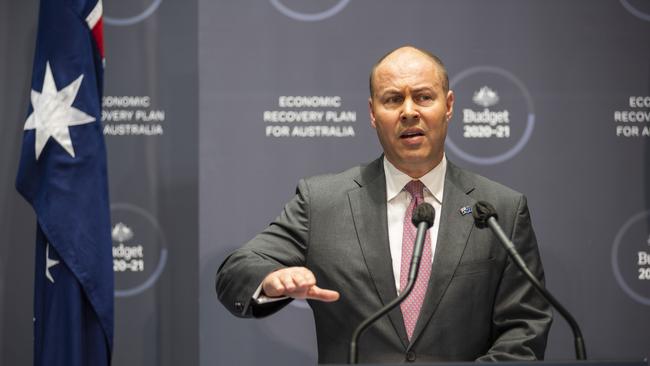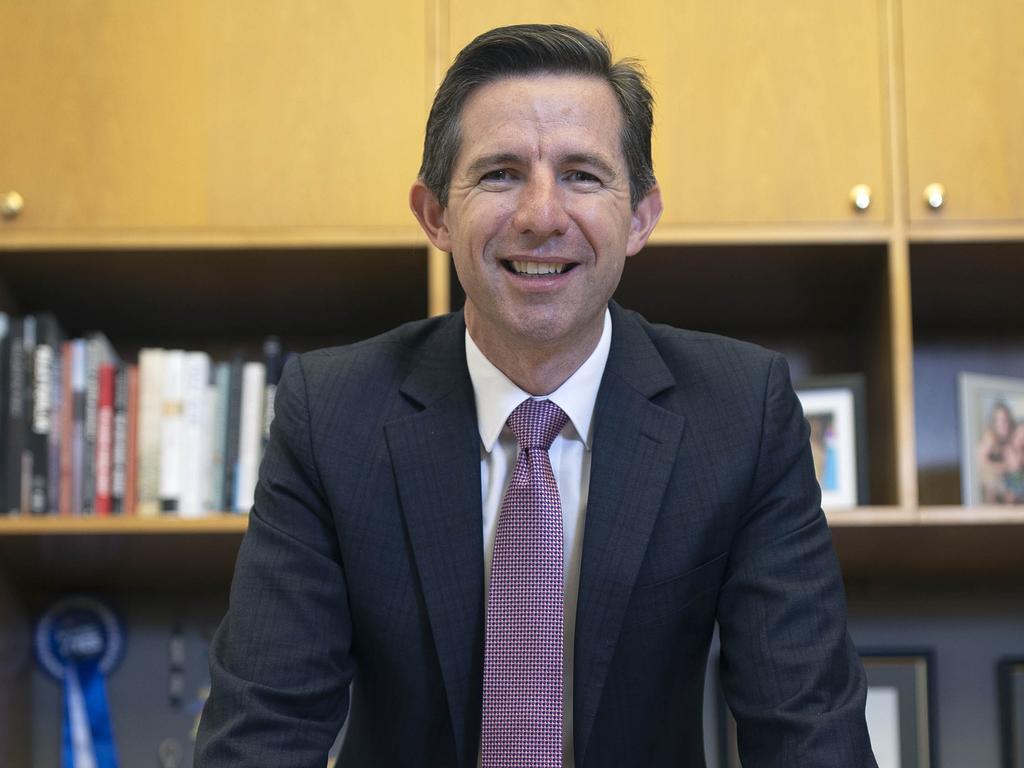Sayonara surplus: we’ll never see another one
The single biggest thing Josh Frydenberg did on Tuesday was to formally and permanently and irreversibly bury the budget surplus.

The Treasurer “announced” — sotto voce, of course — that there will never ever again be a federal budget surplus. Peter Costello’s $20bn 2007-08 surplus will have been the last.
No treasurer and no shadow treasurer — and indeed no prime minister and no opposition leader — will ever again talk about getting the budget into surplus, or even ritualistically go through the motions of committing to it as the foundation of policy and of fiscal ambition.
To do so would be to invite coruscating and utterly pervasive ridicule. To actually commit to the savage spending cuts and the massive tax increases that would be required to at least on paper get to a surplus would be to commit political hara-kiri.
As this realisation not only permeates through the political class but is reflected in continuing reality, it will utterly change both the parameters and the substance of both the political and the policy debate.
The commitment to a budget surplus has been the absolute foundation of the policy structure and mix and also both the rhetoric and heft of the political argument in Australia, all the way back, if with varying intensity, to the Whitlam years of the mid-1970s.
No Labor treasurer, shadow, PM or opposition leader has dared not to commit to at least aim to get the budget into surplus and keep it there.
No Coalition counterpart has ceded the right to at least the claim of ownership of budget surpluses and “paying off Labor debt” — albeit, since Costello, a claim that has looked increasingly threadbare and was completely shredded on Tuesday night when Frydenberg unveiled deficits approaching half-a-trillion dollars just in the four years of the forward estimates.
At its most basic, what becomes the metric, now that it can no longer be the ambition — and crucially also, the restraint — of a budget in the black? What, I’m fiscally competent because I can get the deficit below $50bn?
What will prove particularly potent, as this reality permeates the political class, is that both the policy and political debate will be unmoored in a — dangerous — way not seen since before the 1975 election.
There are two key figures in Frydenberg’s budget and one chart.
The first is the $677bn of spending programmed for the current financial year. It is a figure which is quite simply mind-boggling.
It represents a completely unprecedented 35 per cent of GDP — unlike an incurably inane Treasury, I’ve rounded it off, as the one thing in actual outcome it will not be is the 34.8 per cent budget “forecast”.
This compares with 26 per cent in Wayne Swan’s 2009-10 budget which delivered our previous peak deficit of $54bn.
It is worth nothing that Frydenberg — who less than a year ago was going to be the first treasurer in at least 50 years to only deliver budget surpluses — will now never have a budget with a smaller deficit than that previous record $54bn.
Indeed, the spending for this current 2020-21 fiscal year is double that of Swan’s 2009-10 budget.
Indeed again — an entirely necessary overworked word when discussing this budget — spending in 2020-21 is up a massive 39 per cent in real terms, in just two years, on the 2018-19 pre-virus budget year of a world that seems so very distant now.
This rate of increase is completely unprecedented. It dwarfs the 17 per cent two-year increase of the first two Swan budget years fighting the GFC.
Indeed, again, it even pips the slightly less than 39 per cent real spending increase over the last two Whitlam budgets.
Ah, but I referenced the “pre-virus” 2018-19 year; this $677bn figure is swollen by all the emergency — and self-cancelling — spending like JobKeeper.
Well, yes and an even more emphatic no — as the second key figure is the forecast that spending in 2023-24 will be $593bn.
That is the year we are supposedly back to “normality”. Indeed, it is specifically assumed we are, with that assumption of a vaccine — and by implication, an effective vaccine — by the end of 2021, played out in the “normal” economic growth forecasts through to 2023-24.
So, when the “special” spending washes out, we will still be spending $593bn — compared with $478bn in that 2018-19 pre-virus year.
Give or take the odd billion or 10, Frydenberg will have executed a $100bn a year permanent spending increase, unconnected to the virus.
Then, finally, we have the graph of the medium-term budget projections out to 2030, beyond the already dodgy four-year formal projections.
For the first time that Treasury has been producing these utterly ludicrous “projections”, it is not “projecting” the budget whirring seamlessly and assuredly back into surplus, and then staying there.
Even in Swan’s 2009 budget, while it couldn’t get back to surplus by the “end” budget year of 2012-13, Treasury did “project” it back into surplus by 2015-16.
Not so in this budget. It is projected to still be at least $50bn in deficit in 2030-31. And no, that is not because of caution about the virus and vaccines; indeed, exactly the opposite.
These projections are always absurdly optimistic; they always assume the economy whirrs back to strong, uninterrupted growth. They always assume politicians never go on spending sprees; elections don’t happen.
This year’s does all that and then assumes the ultimate “economist’s can-opener”. This is not just the vaccine; but that we — indeed, the entire world — is never again “interrupted” by this or any other virus.
So, on the most ludicrously optimistic treasury projection, the budget will still be at least $50bn in deficit in 2030-31.
I repeat: we will never see another surplus.







The single biggest thing Josh Frydenberg did on Tuesday, which will completely transform both the political and policy debate like nothing else in at least the last 30 years, was to formally and permanently and irreversibly bury the budget surplus — as a concept, as an ambition and as a reality.